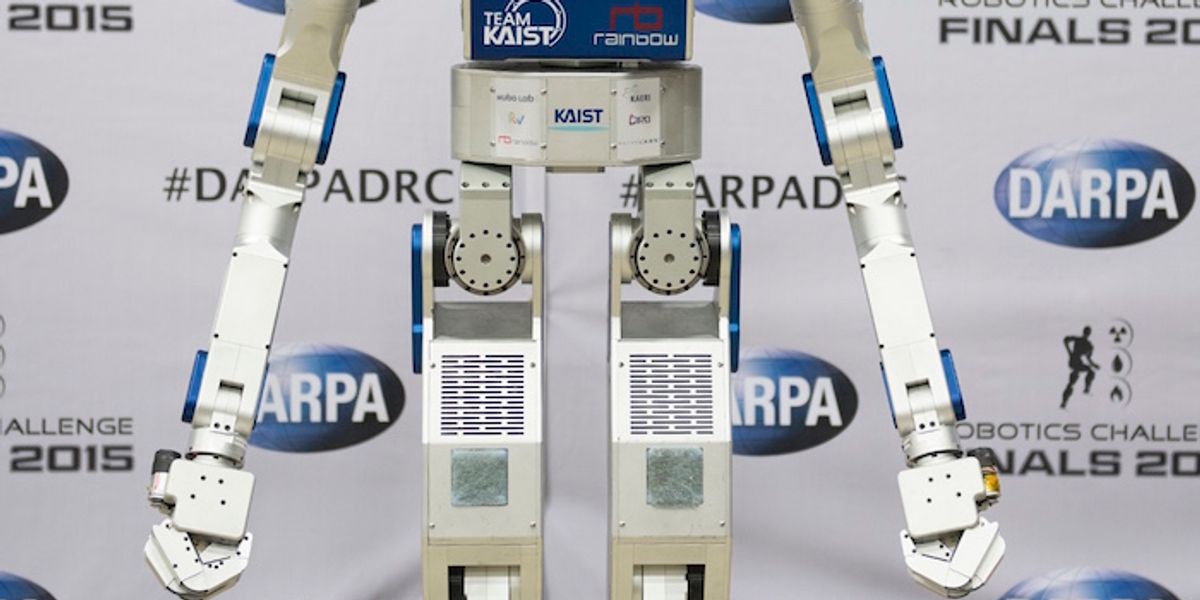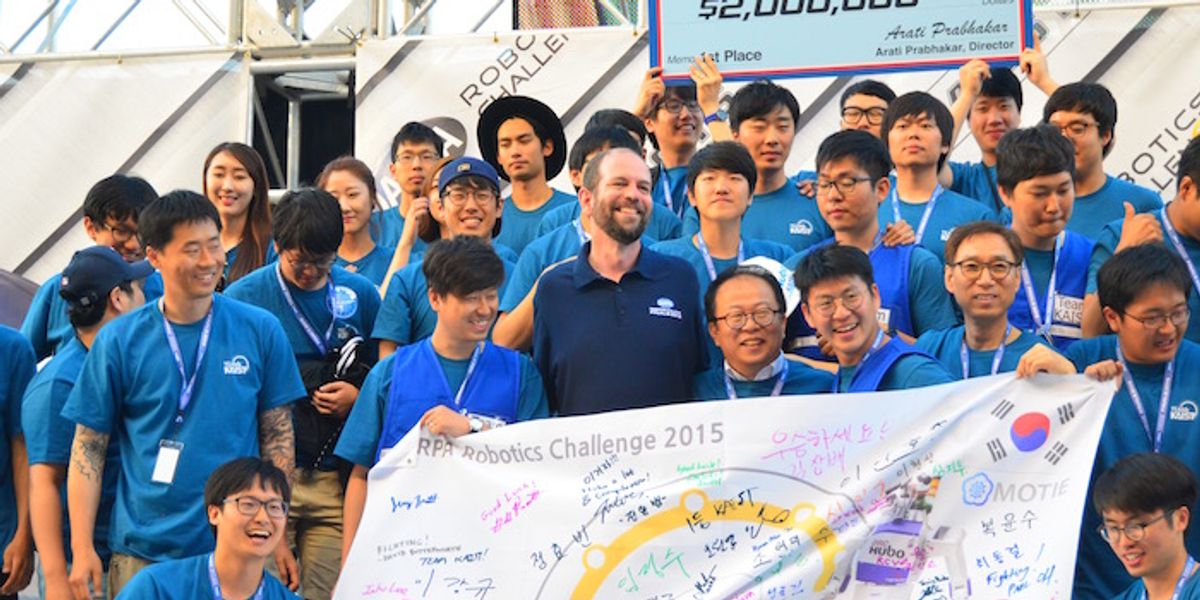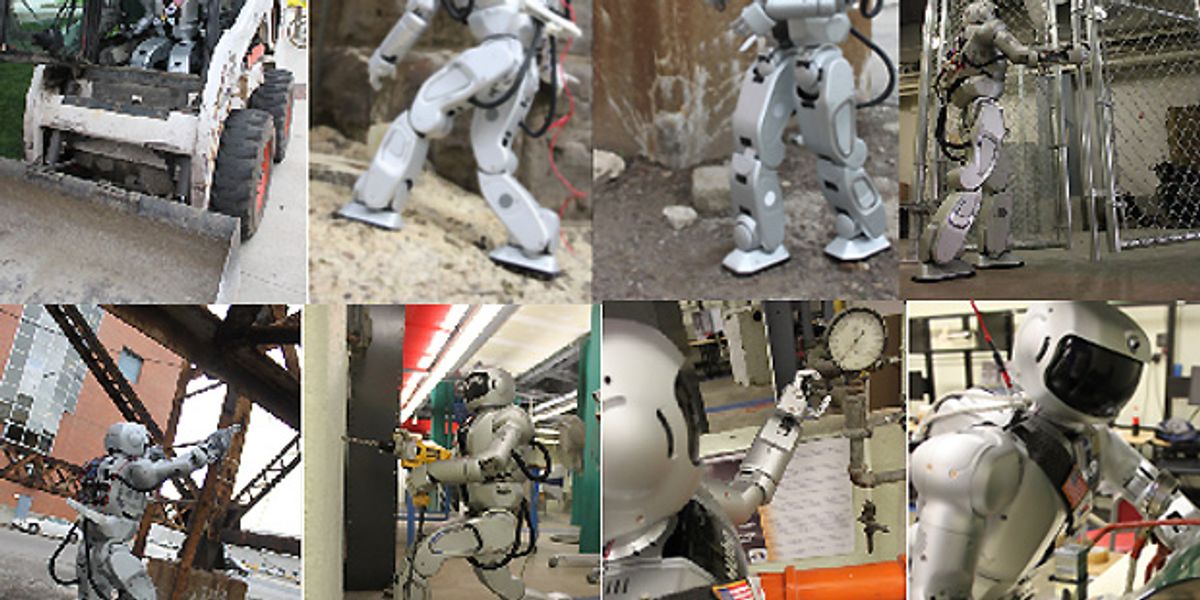DRC-Hubo+
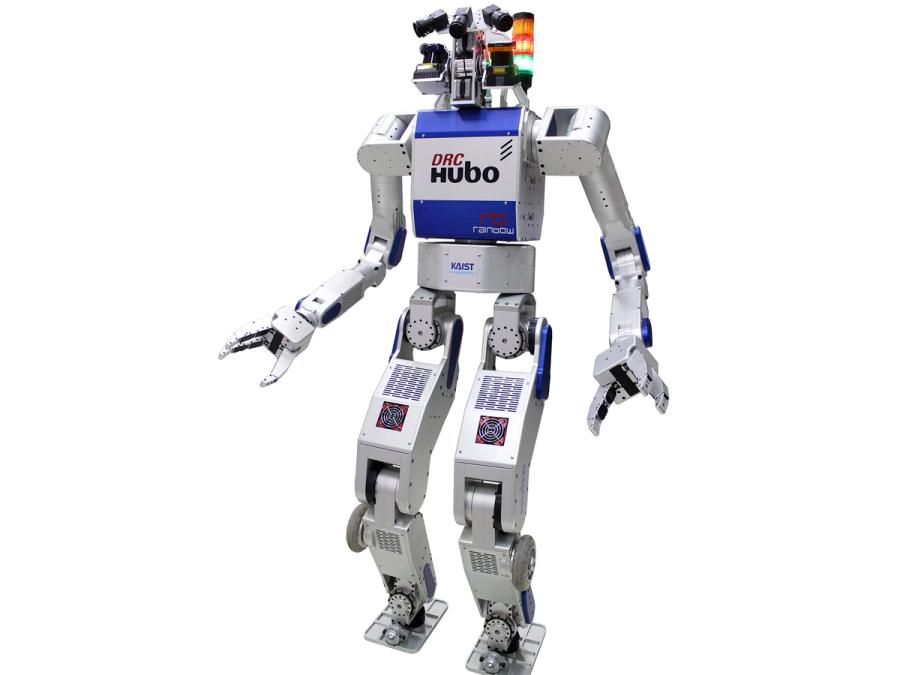
DRC-Hubo+ is a versatile humanoid that won first place at the DARPA Robotics Challenge in 2015. The robot can use tools, open doors, and even drive a vehicle. But its best trick is transforming itself from a walking biped to a wheeled machine.
- Creators
- Year
- 2015
- Country
- South Korea 🇰🇷
- Categories
- Features
Did you know?
DRC-Hubo+ participated in the torch relay of the 2018 PyeongChang Winter Olympics, the first non-human to ever do so.
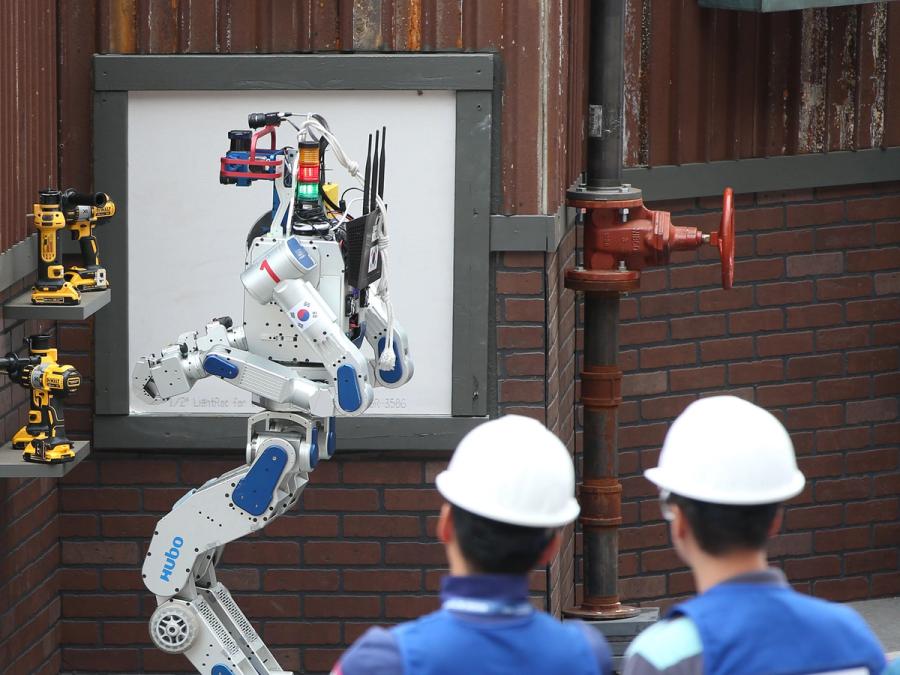
History
DRC-Hubo was a versatile humanoid robot built a team of South Korean researchers from the Korea Advanced Institute of Science and Technology (KAIST) led by Professor Jun Ho Oh. In 2015, Team KAIST emerged as the winner of the DARPA Robotics Challenge (DRC) in Pomona, Calif., after DRC-Hubo beat out 22 other robots from five different countries, winning the US $2 million grand prize. Based on KAIST's humanoid platform, DRC-Hubo's "transformer" ability to switch back and forth from a walking biped to a wheeled machine proved key to its victory. Many robots lost their balance and collapsed to the ground while trying to perform tasks such as opening a door or operating a drill. Not DRC-Hubo. Its unique design allowed it to perform tasks faster and, perhaps more important, stay on its feet—and wheels.

Specs
- Overview
Transforms between a walking biped (to climb stairs or walk over debris) or a wheeled machine (for flat surfaces). Able to grasp and manipulate objects like power tools and door knobs. Can be teleoperated for use in hazardous environments. Equipped with an air-cooling system.
- Status
Ongoing
- Year
2015
- Website
- Width
- 59 cm
- Height
- 170 cm
- Weight
- 80 kg
- Speed
- 1.5 km/h
- Sensors
Rainbow Robotics force/torque sensors at the end of each limb. ADIS-16480 inertial measurement unit (IMU). KVH-1750 fiber-optic gyro. Two optical flow sensors on shins. Camera and Hokuyo 2D lidar.
- Actuators
Maxon EC-Powermax 30 and Maxon RE-Max 29
- Degrees of Freedom (DoF)
- 32 (Head: 1 DoF; Arm and Hand: 8 DoF x 2; Leg and Wheel: 7 DoF x 2; Waist: 1 DoF)
- Materials
Aluminum
- Compute
Intel NUC PC for head sensing and for motion
- Software
Linux OS and PODO (a customized motion control framework developed at KAIST)
- Power
Two lithium-on batteries, 4 hours of operation
- Cost
- $320,000
